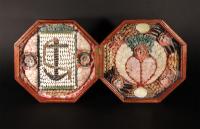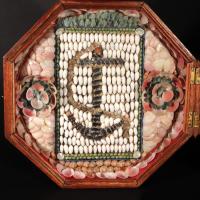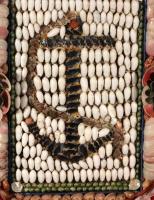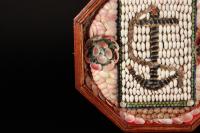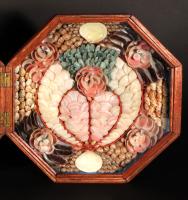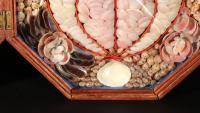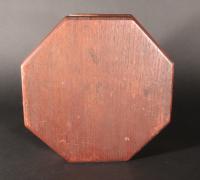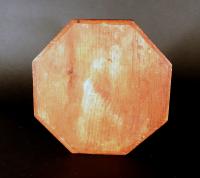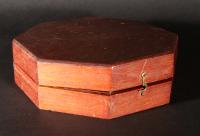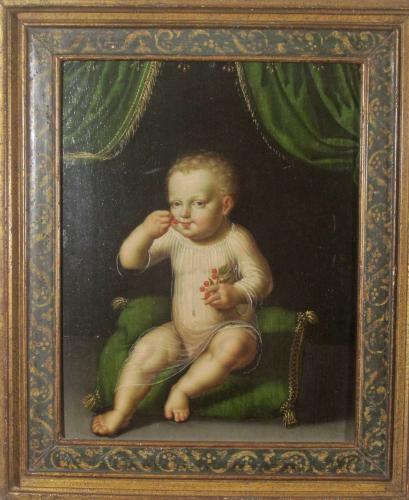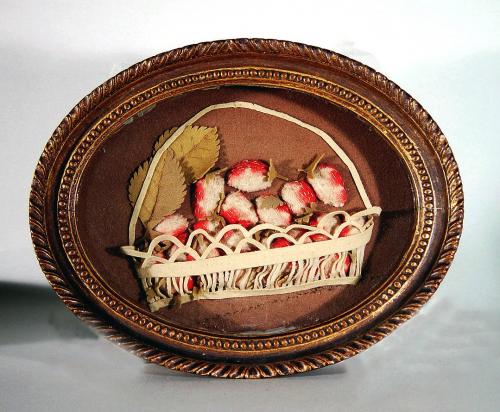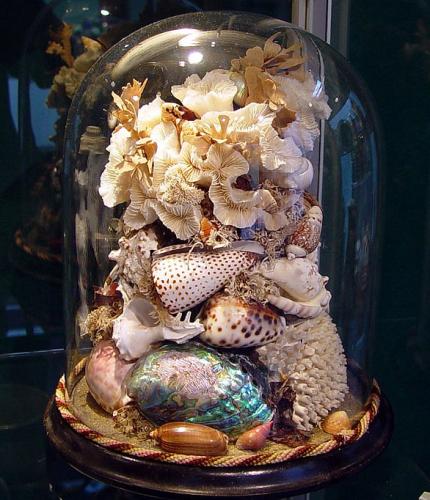
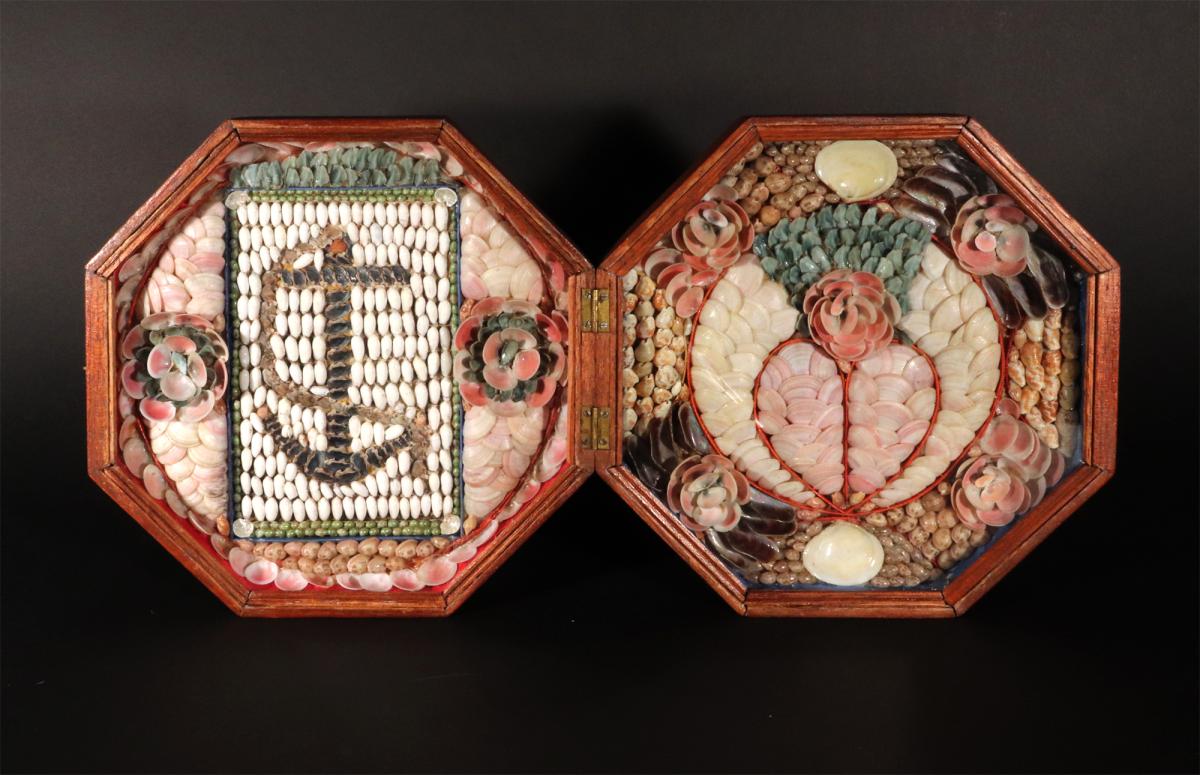
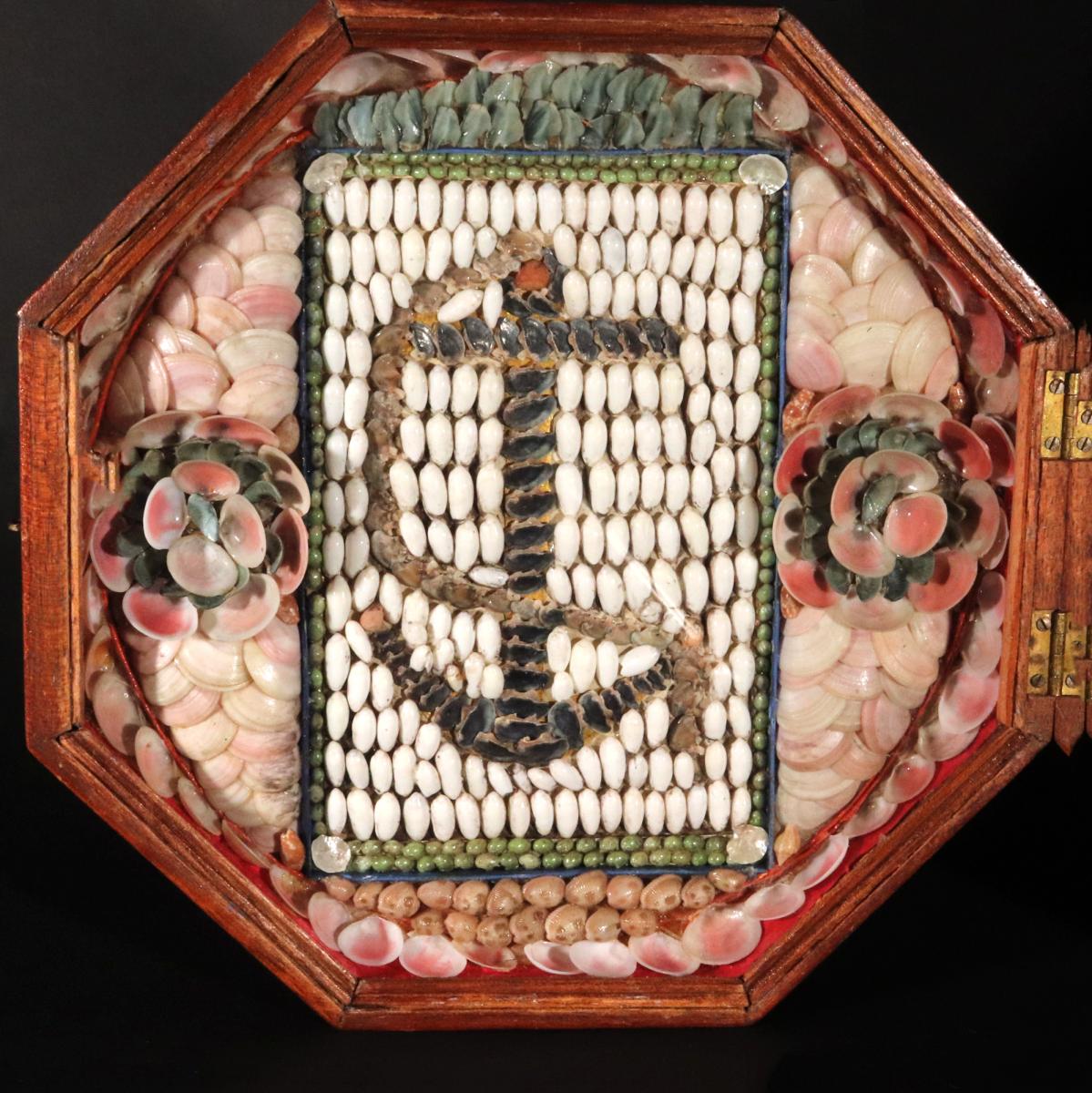
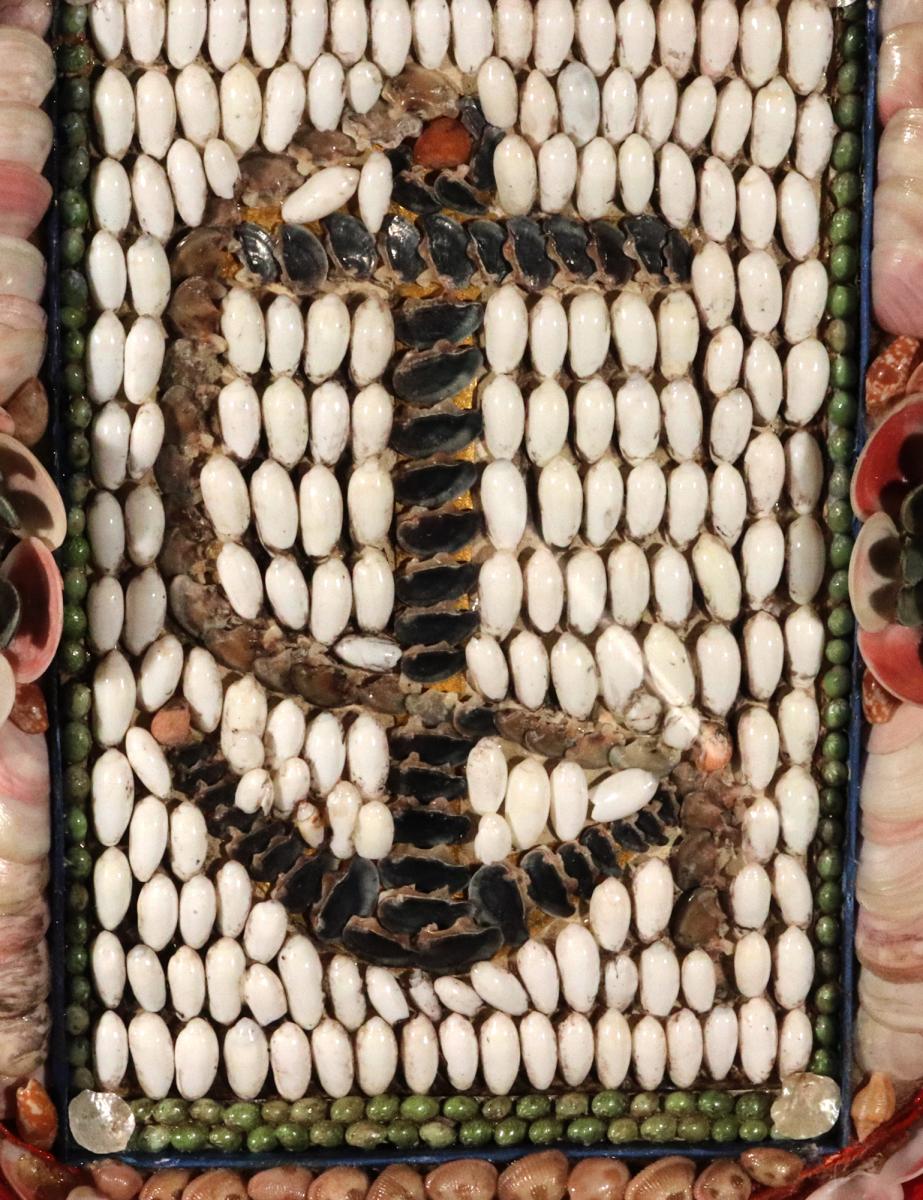
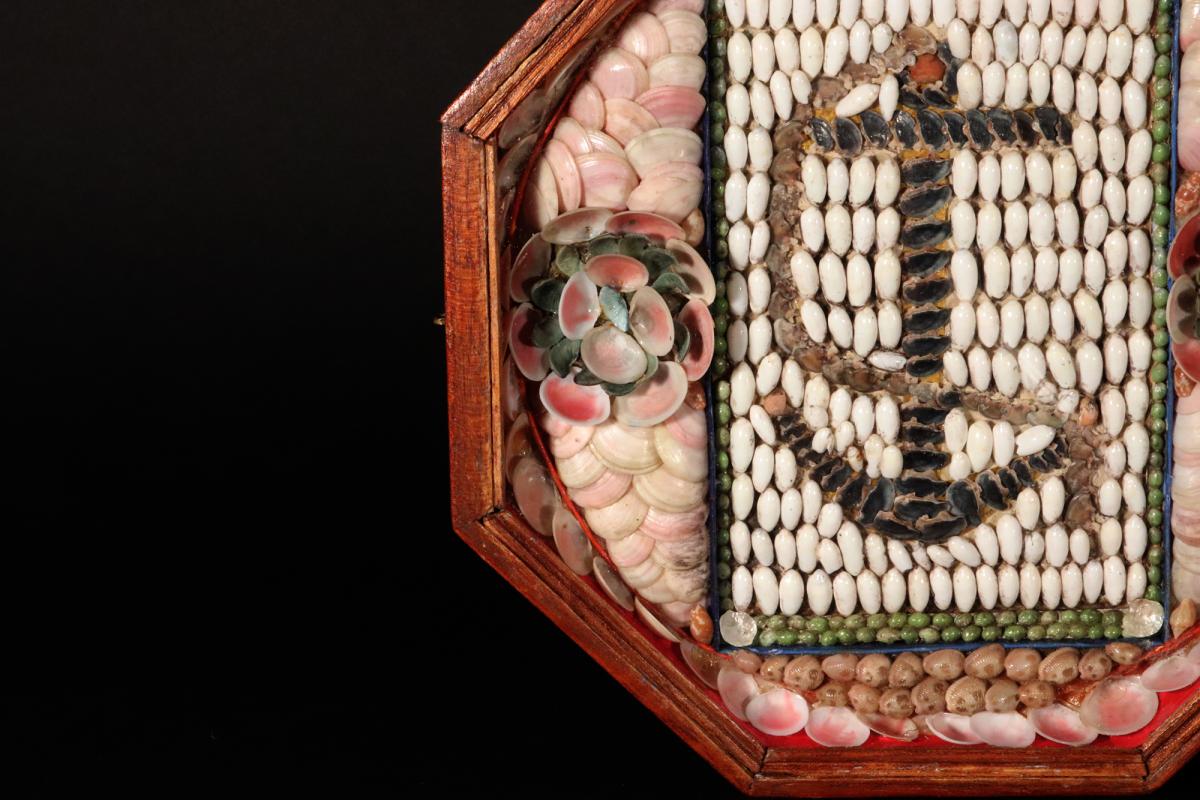
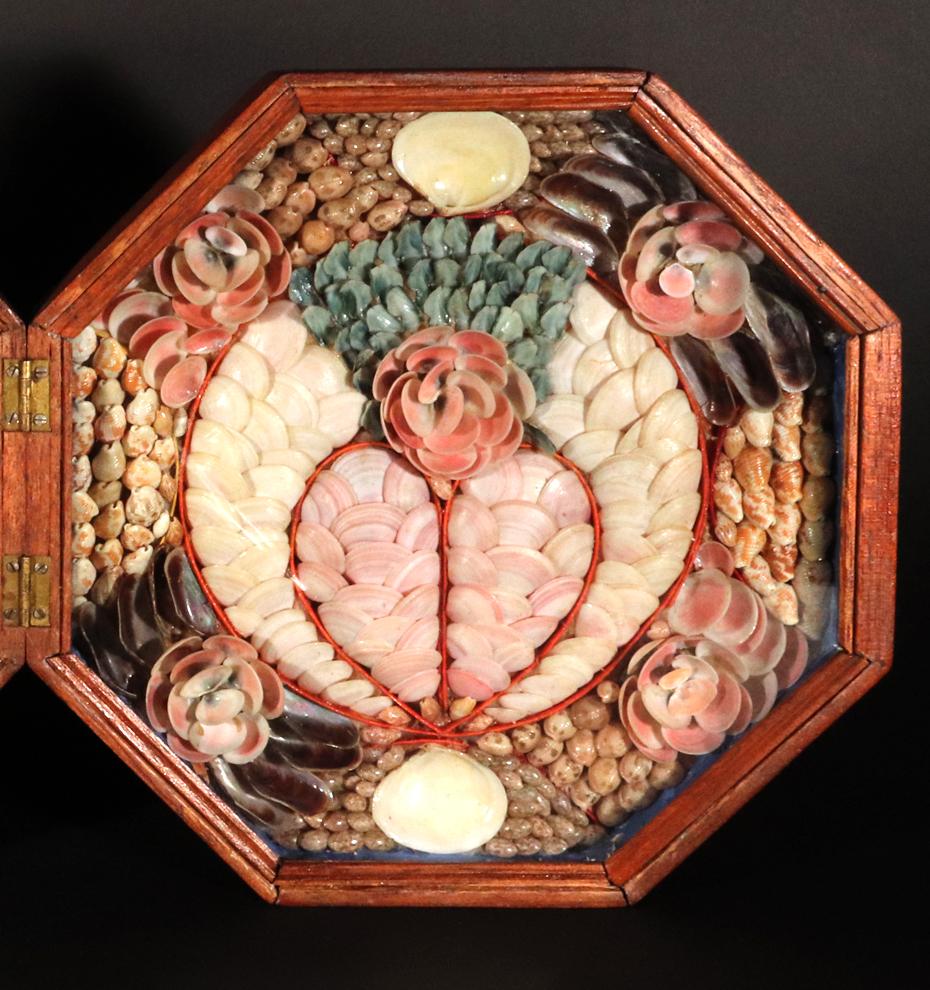
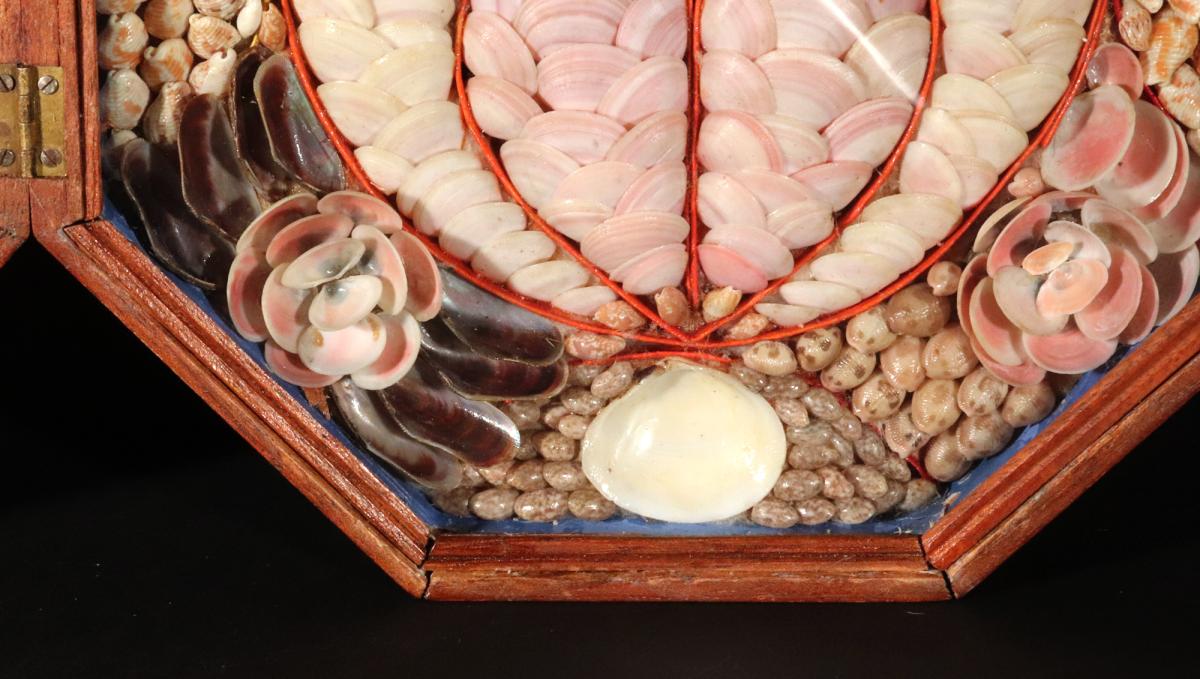
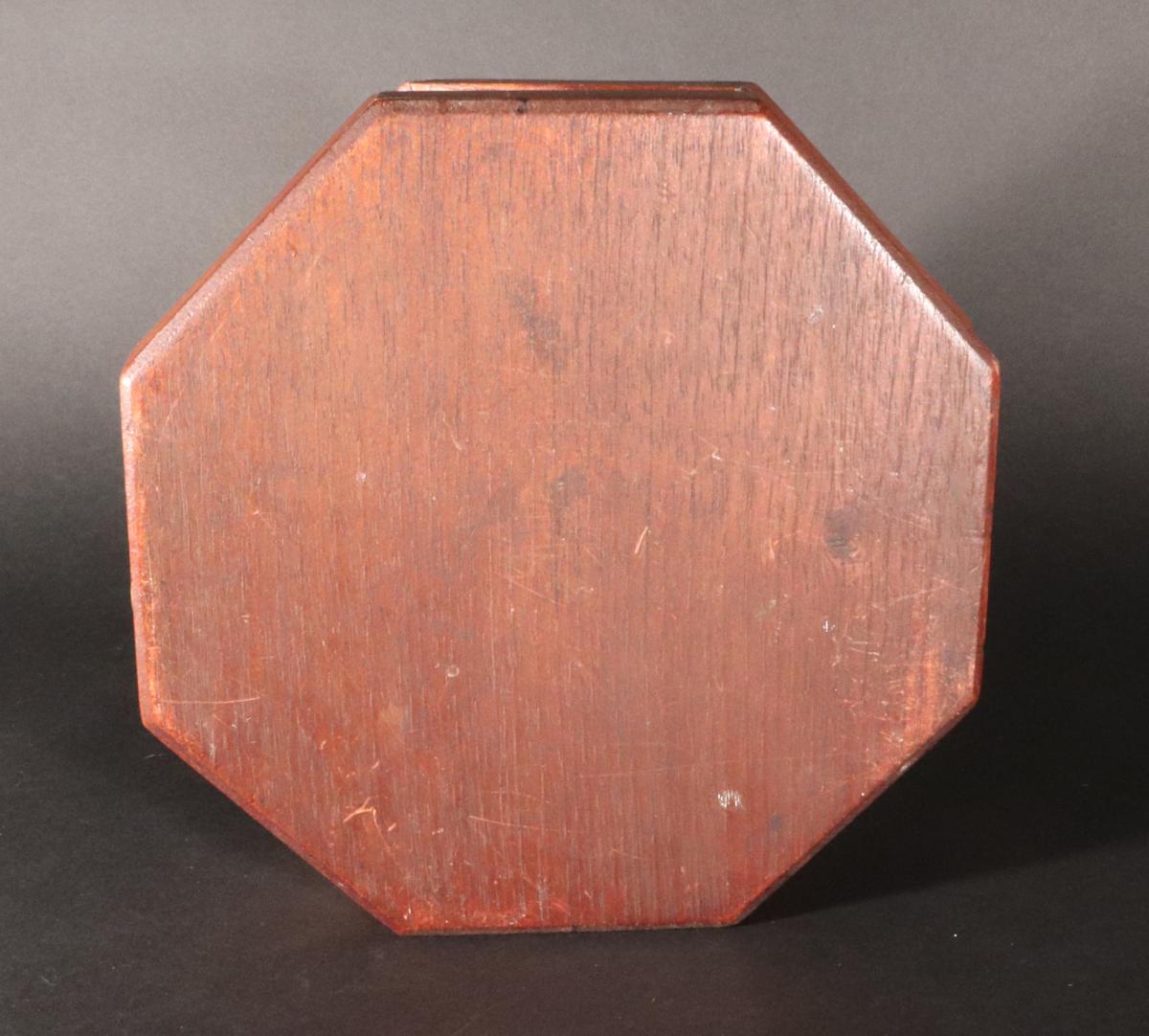
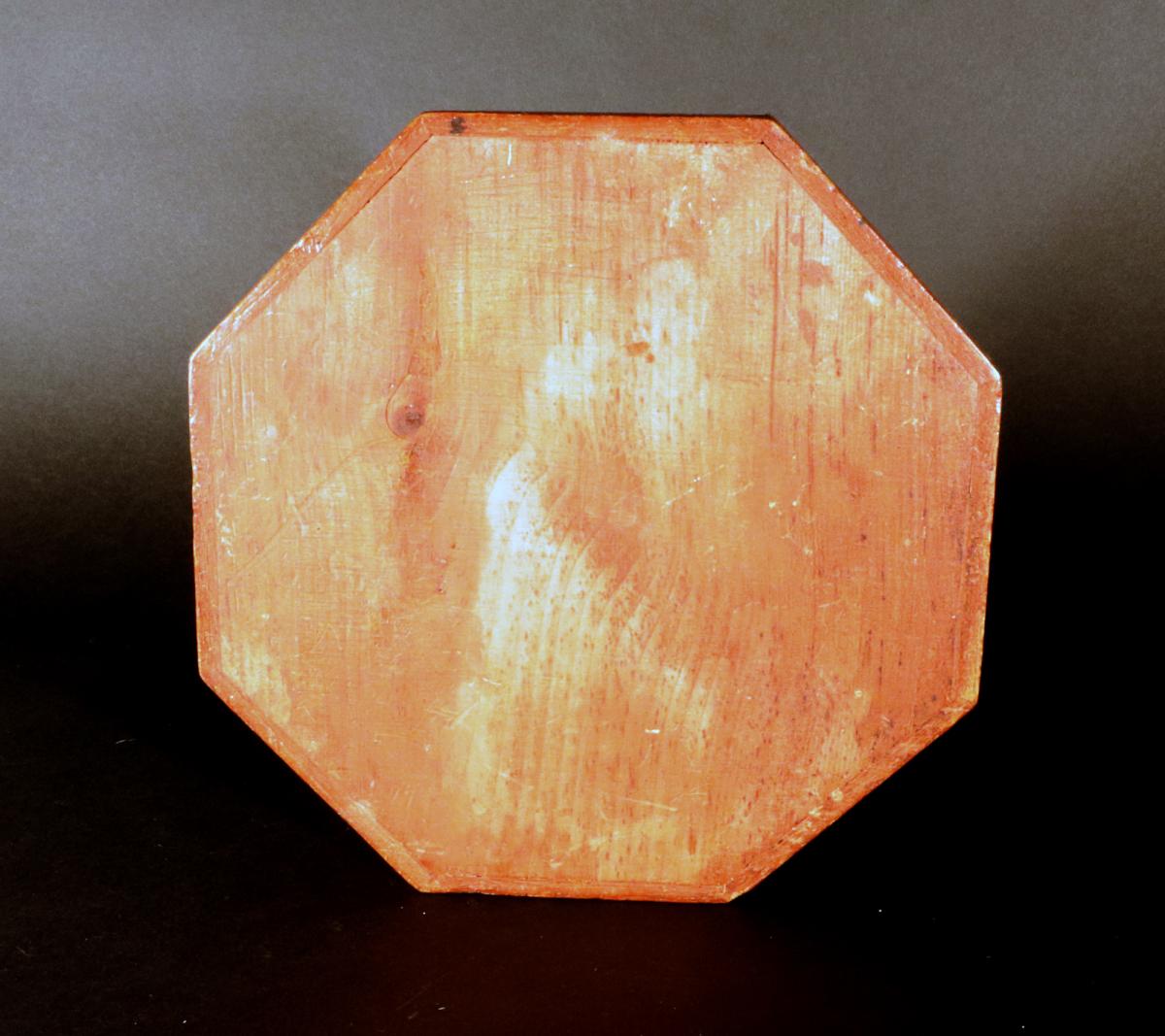
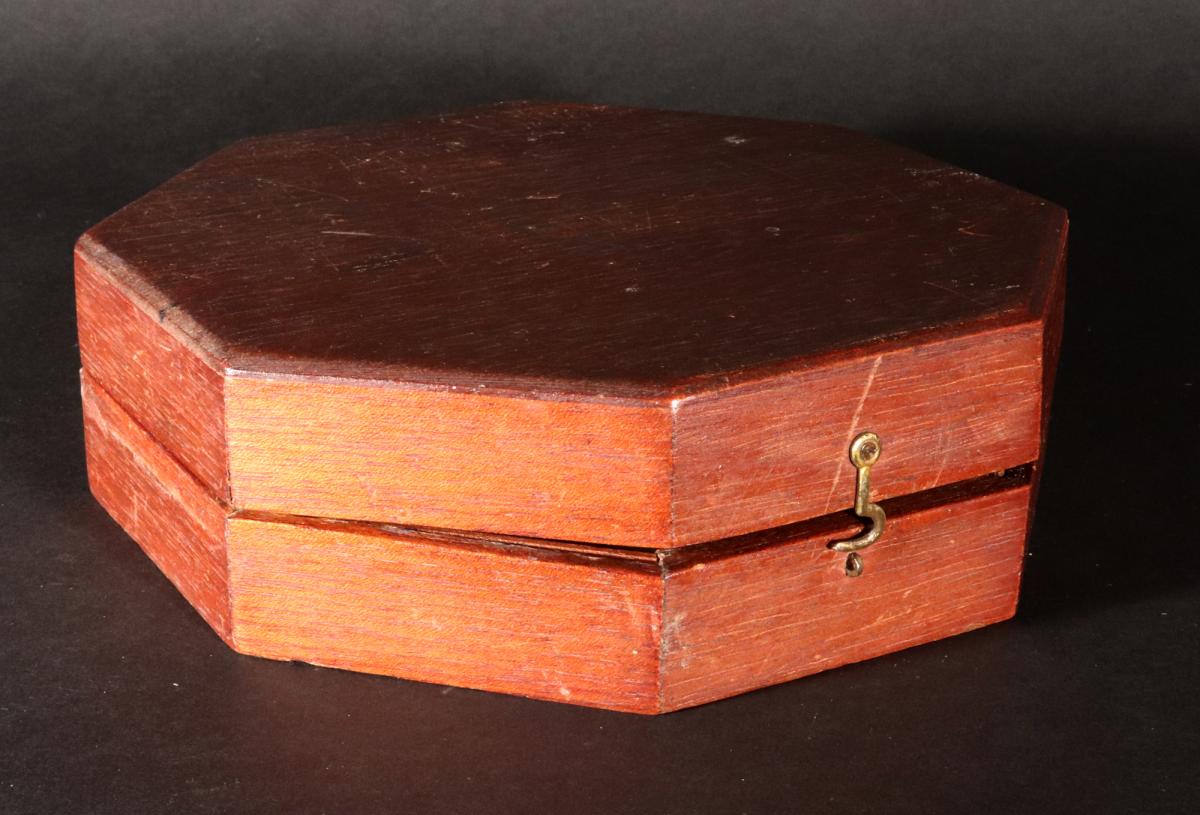
This object is eligible for a Certificate of BADA Provenance
The BADA Standard
- Since 1918, BADA has been the leading association for the antiques and fine art trade
- Members are elected for their knowledge, integrity and quality of stock
- Our clients are protected by BADA’s code of conduct
- Our dealers’ membership is reviewed and renewed annually
- Bada.org is a non-profit site: clients deal directly with members and they pay no hidden fees
To be exhibited at
The BADA Christmas Gift ListDouble Sailor's Valentine with Large Anchor and Heart, Barbados.
Barbados, West Indies.
Circa 1885.
The double sailor's valentine from Barbados is formed within two hinged octagonal mahogany cases with the original loop clasp to the side. On the right side is a central oval design with the charming motto, "Forget Me Not" and on the left side a central heart shape all formed by different shells.
Dimensions:
18 1/4 inches wide x 9 1/8 inches high x 2 3/4 inches deep (closed)
Each side 9 1/8 inches x 9 1/8 inches x 1 1/4 inches deep open
Reference:
Sailors’ Valentines originated in the mid-1800s. The majority of Sailors’ Valentines came from the West Indies Island of Barbados, a Port of Call for American and English ships1. Sailors would buy or trade items for these nautical tokens as romantic gifts to take home to their loved ones during their long voyages at sea. Although Sailors’ valentines were made as early as the 1750s, they did not become popular until 1830s. The sailors’ valentine craze lasted until 1890, albeit some examples were made into the early 20th century.
Sailors’ valentines are a form of shell craft, a type of mostly antique souvenir or sentimental gift made using large numbers of small seashells. These were originally made between 1830 and 1890, and they were designed to be brought home from a sailor’s voyage at sea and given to the sailor’s loved one or loved ones
THE SAILOR'S VALENTINE
A sailor's valentine is made of one, or, more often, a hinged pair of octagonal wooden display cases lined with fabric. Small shells, seeds, or other materials are glued to the fabric, usually forming a colorful design. The name "sailor's valentine" comes from the fact that there is usually a sentimental phrase, such as "Forget Me Not," "With Love," or other sayings that we use on Valentine's Day. The shape is thought to come from old compass cases carried aboard sailing ships.
Seashell collecting became popular by the early 1800s, especially in England and America. By the mid-1800s, sea shells were brought back from the Caribbean to Europe and America for use in home display cases. This interest in shell collecting may have later inspired the idea of the sailor's valentine, and the intricate shell display cases influenced the busy designs of these affordable souvenirs of sea voyages.
Research has discounted the long-held belief that these were made by sailors themselves as shipboard diversion. Several facts point to the West Indies, and particularly Barbados, as an origin for sailor's valentines. The West Indies had enjoyed close economic ties with England and America since colonial times. Barbados, easternmost of the British West Indies, was an important port of call for ships engaged in trade among the islands. The sailor's valentine on display in the Museum is representative of many that were purchased by seamen in Barbados during the late 1800s.
Adapted from an article by Richard Malley, "Captain Warren's 'Souvenir from Barbados,'" published in the Fall/Winter 1987-88 issue of The Mariners' Museum Journal.
(Ref: NY10377-krrr)
Dimensions
46.36cm wide open x 23.19cm highStock number
NY10377-krrrThe BADA Standard
- Since 1918, BADA has been the leading association for the antiques and fine art trade
- Members are elected for their knowledge, integrity and quality of stock
- Our clients are protected by BADA’s code of conduct
- Our dealers’ membership is reviewed and renewed annually
- Bada.org is a non-profit site: clients deal directly with members and they pay no hidden fees


